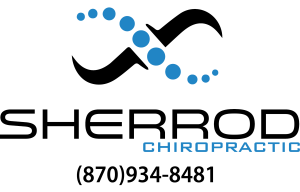Arthritis
Wellness Tip: Understanding Osteoarthritis
For decades, osteoarthritis, or degenerative joint disease, has been considered a part of aging. Recent research points out, however, that older people don’t have to suffer from osteoarthritic pain. And, surprisingly, people much younger than 65 can develop osteoarthritis.
What Is Osteoarthritis?
• Osteoarthritis affects the cartilage—slippery tissue on the ends of bones that meet in a joint. Normally, cartilage helps bones glide over one another. In a patient with osteoarthritis, however, the cartilage is broken down and eventually wears away. As a result, instead of gliding, bones rub against each other, causing pain, swelling and loss of motion.
• Although the majority of patients with osteoarthritis are 65 and older, recent research shows that osteoarthritis is not a by-product of aging. Family history of osteoarthritis, being overweight, lack of exercise and prior joint injuries are suggested risk factors.
• Osteoarthritis is diagnosed through a combination of clinical history, patient examination and X-rays. Other tests, such as drawing fluid from the joint, are sometimes used.
What Are Signs of Osteoarthritis?
• Steady or intermittent joint pain
• Joint stiffness after sitting, sleeping or otherwise not moving for a long time
• Swelling or tenderness in the joints
• A crunching feeling or the sound of bones rubbing against each other
Should Osteoarthritis Patients Exercise?
• Exercise is one of the best forms of osteoarthritis treatment and prevention. It strengthens the muscular support around the joints and improves and maintains joint mobility and function.
• Exercise helps control weight and improve the patient’s mood and outlook.
• Low-impact or non-weight-bearing activities, such as walking, stationary training, and light weight training, work best for patients with osteoarthritis.
• Strengthening exercises help tone the key muscle groups that relate to the function of the joints that may be weakened by the degeneration.
• If you are overweight, start exercising carefully, so as not to put too much stress on the knee and ankle joints.
• Stair climbing, water aerobics, Theraband workouts and similar exercises will help to keep the joints mobile without straining them.
• When exercising, learn to read the body’s signals and know when to stop, slow down or rest.
How Can Your Doctor of Chiropractic Help?
• Doctors of chiropractic, by the nature of their work, can detect the earliest degenerative changes in the joints. They see the impact of degenerative changes in the spine, as well as in the hips, knees and other weight-bearing joints.
• Doctors of chiropractic are also trained to relieve the pain and improve joint function through natural therapies, such as chiropractic manipulation, trigger-point therapy or some massage techniques.
• Doctors of chiropractic can provide exercise counseling, helping you choose exercises that are best for you. If a sore or swollen joint prevents you from exercising, talk to your doctor of chiropractic about other drug-free pain-relief options, such as applying heat or cold to the affected area.
• Your doctor of chiropractic can help you choose proper supplements that play important roles in osteoarthritis prevention and treatment.
What Supplements May Be Helpful?
• Glucosamine and chondroitin sulfate are the two most popular and most researched supplements. When taken over a period of time, they tend to reduce pain and increase function, especially with knee osteoarthritis, and may also slow progression of the disease.
• To choose the proper supplement, consult your doctor of chiropractic. Studies used 1,500 mg per day of glucosamine and 1,200 mg per day of chondroitin sulfate. If you use a different dosage, the effect will be different.
• Unlike the quick effect of medications, it usually takes several weeks before you feel pain relief or improvement in function when taking a supplement.
• Supplements may not be for everyone. Chondroitin sulfate may interfere with anticoagulant medications. In addition, the supplements haven’t been studied in pregnant women, so these women should not take glucosamine and chondroitin.




